It looks like some rather quickly done graffiti. It is indeed graffiti, but a very old one found outside the walls of the ancient town of Rhamnous.
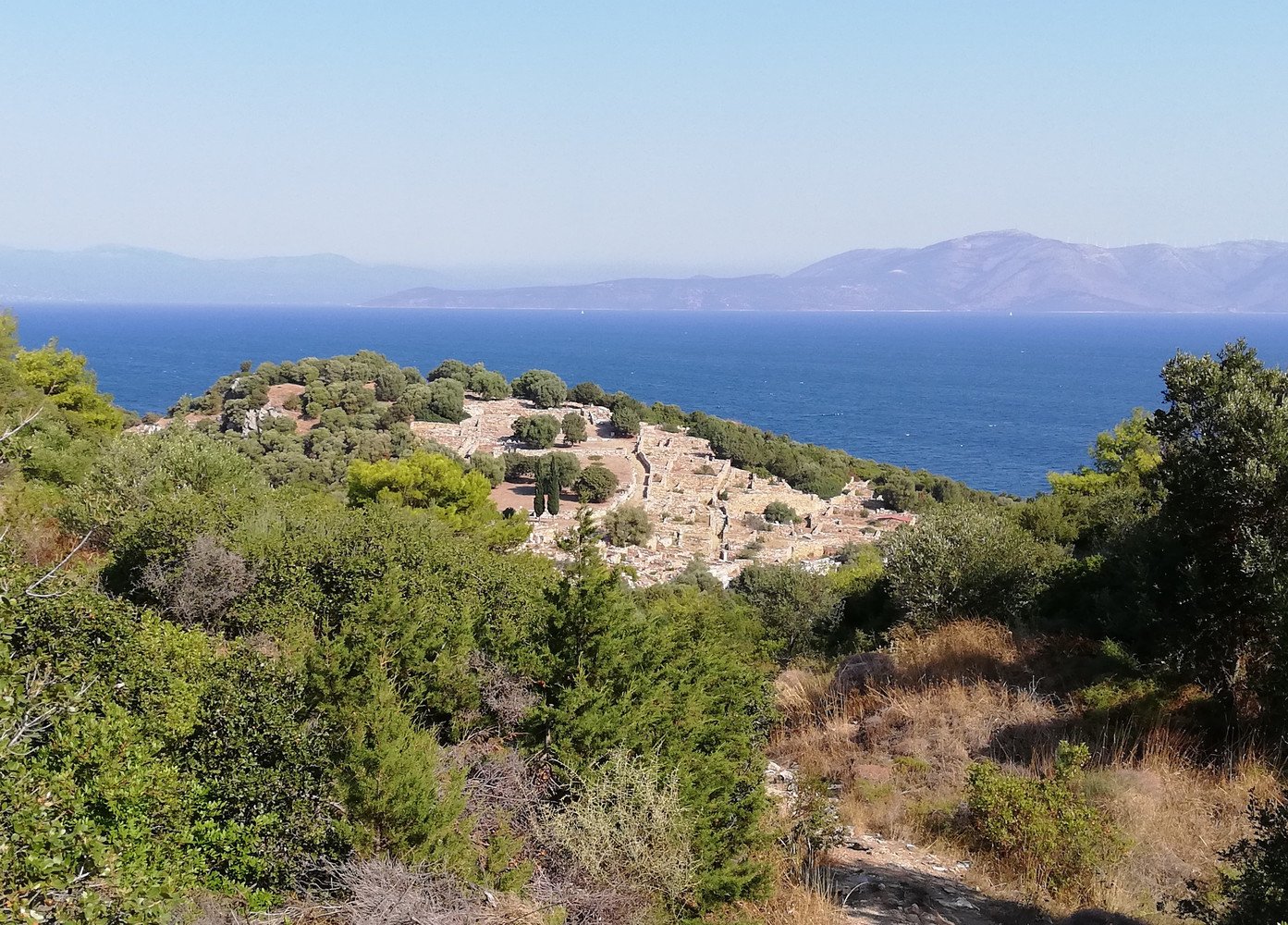
In antiquity, it was one of the many demes (communities) of the ancient city-state, renowned particularly for its strategic location and the superb sanctuary of Nemesis, goddess of retribution. During the 5th century BCE, the steeply rising hill turned into a fortress surrounded by a massive wall and towers while the interior was divided into two parts: an upper with purely military installations, and a lower where public buildings and private houses were built –the gymnasium, the theatre as well as domestic quarters and stepped streets are still visible. During the next two centuries, Rhamnous experienced its greatest economic and cultural growth, but as soon as the political and social conditions changed, its strategic importance vanished and its decline was rapid.
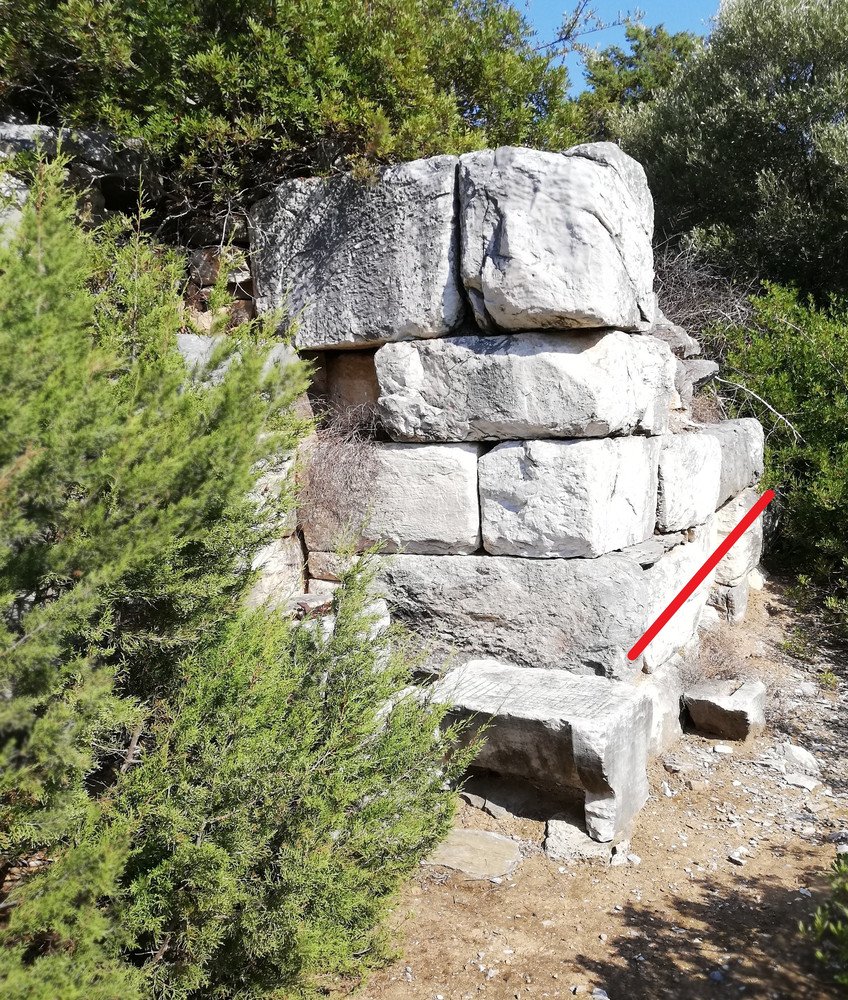
Back to our main topic, this ancient kind of desk with the rather strange scratched graffiti was found and still stands just outside the eastern side of the fortification wall and next to a rectangular tower. The patterns look to some extend absurd but they were serving a very specific function; it is an early and improvised board game, most likely carved at some point during antiquity.

Several different types of them are scratched into public steps, pavements, and sanctuaries in several regions of the Peloponnese, in Athens, as well as in Ephesus, Didyma, Knidos, and Aphrodisias, nowadays situated in western Turkey.
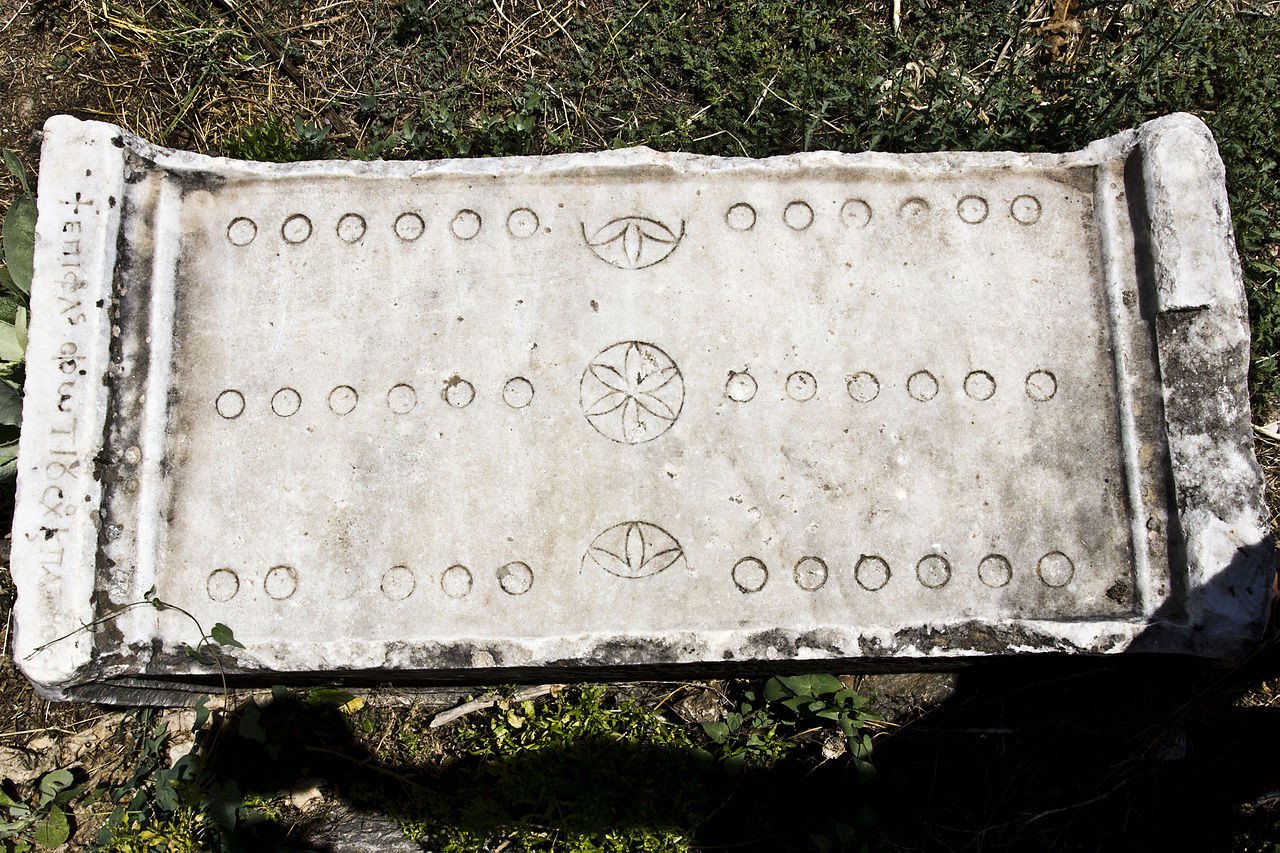
Some are very carefully made and remind the backgammon, tavli in Greek, and tabula in Latin, which has been played in the region at least since Late Antiquity and which is still highly popular in Greece. The board was designed with two sets of pairs of 12 squares, subdivided into pairs of six, and separated by a middle row of points. The players had different color checkers which were moved according to the specific rules of the game and of course two or three dice.
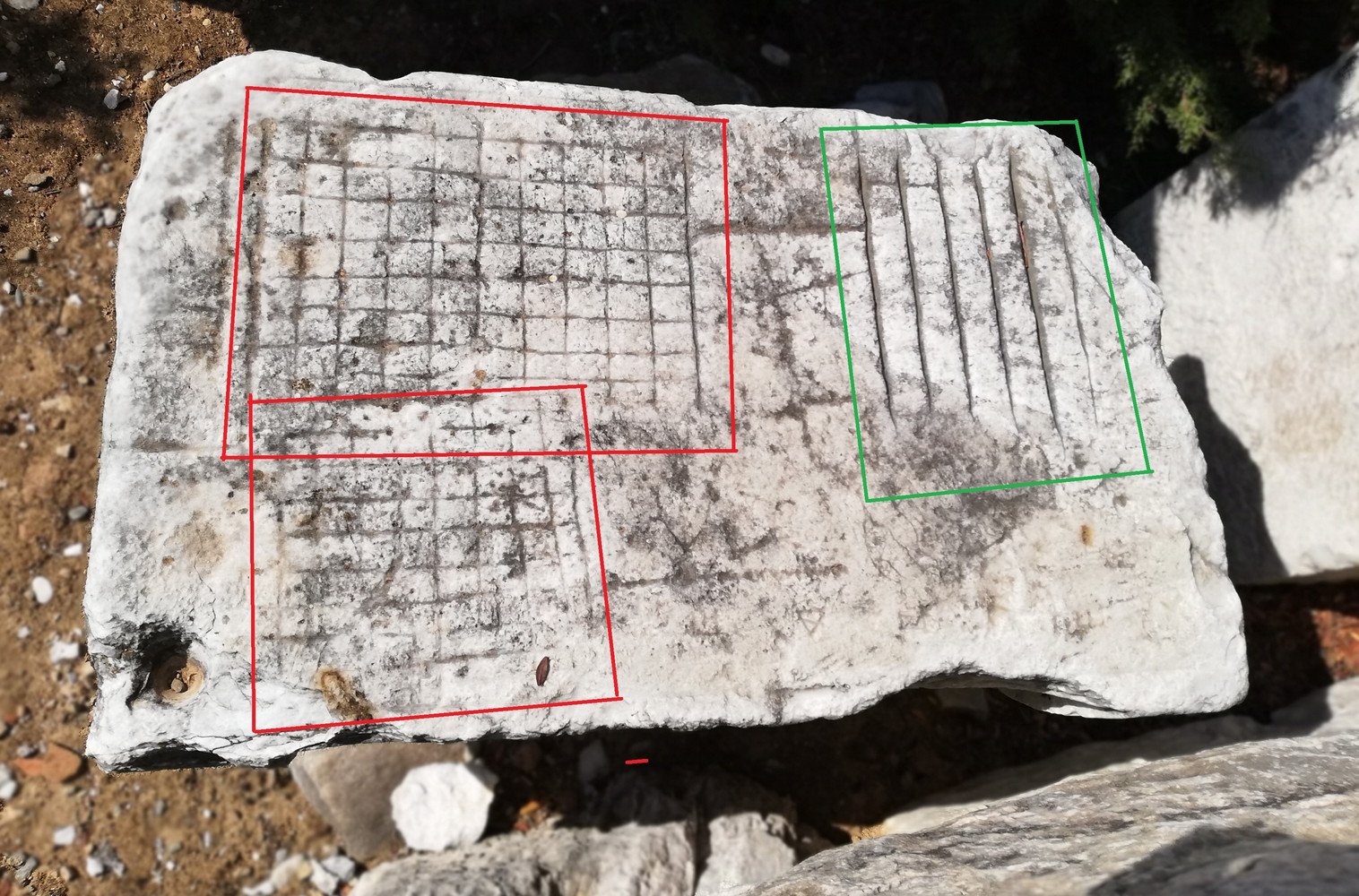
The scenery of our board game at Rhamnous is quite different, more informal and complex, with marked squares at the one side (some overlapping) and a set of six lines at the other. More precisely, at the one side of the desk, there is a quite large 8x10 board, and next to it a smaller 8x8 board more likely added at some point later. This is an early type and predecessor of the English Draughts or American Checkers, first made with an unequal number of squares per side, but later improved and turned into the well-known form of the 8x8 board.
At the other side of the desk, six parallel lines are carved, and recall the famous ancient Greek game of the “Five Lines”. This was a game of chance and strategy played with dice. Each of the players had five pieces upon five lines and the line between these was the sacred line. The player who first managed to place his pieces on the sacred line was the winner.
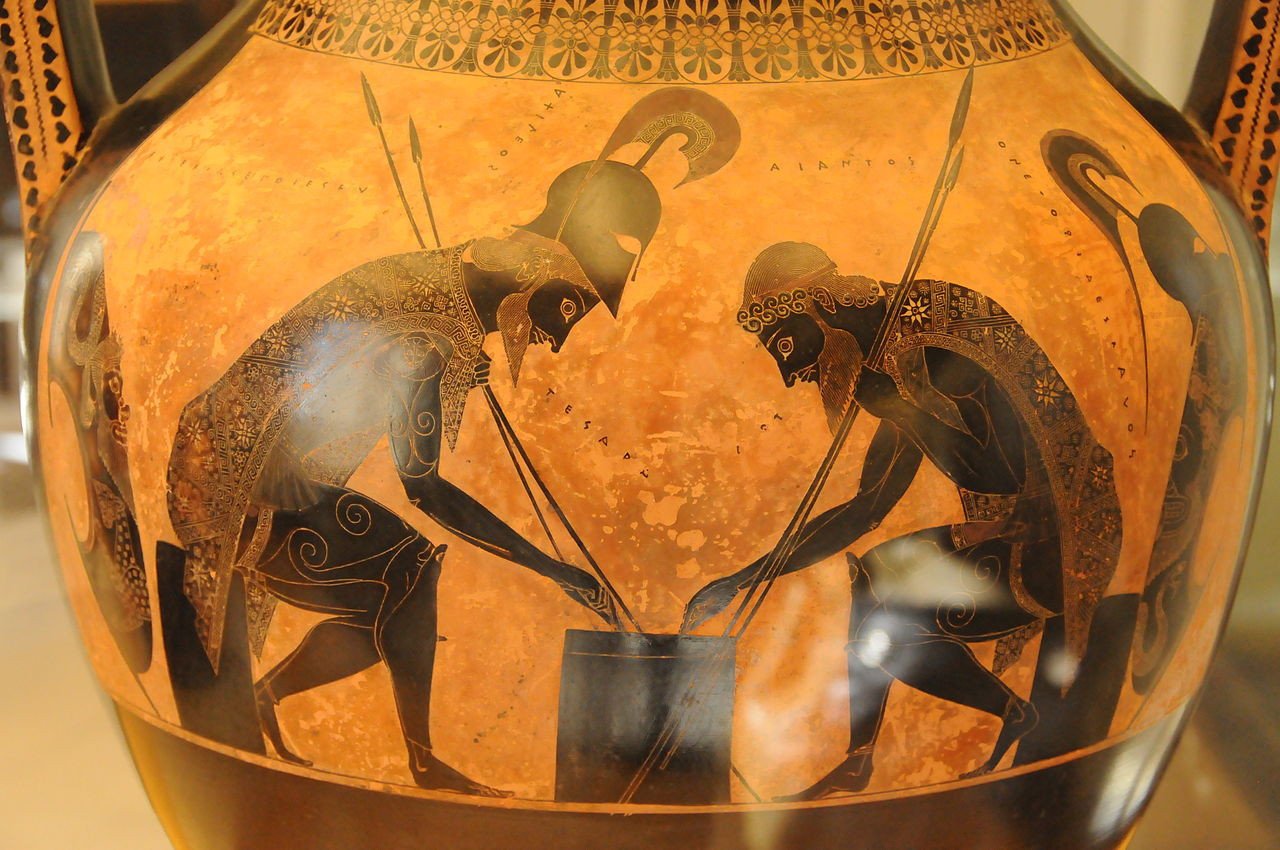
By Exekias. 540-530 BCE, Rome, Vatican Museums. Wikimedia Commons.
The earlier example of this seems to be a clay-made miniature gaming tablet found in a grave in Eastern Athens dating to the mid-7th century BCE. However, the most elaborate and probably the earlier of such a “gaming scene” was painted around 540 BCE by the Athenian vase painter Exekias on an amphora, now on display in Rome, depicting the Homeric heroes Achilles and Ajax playing a game. Here not only the names are written beside the heroes, but also the results of their throws: Achilles on the left calls out that he has a 4, while Ajax on the right only has thrown a 3.
Friends and common people, athletes, merchants, and sailors were often engaged in such games, while ancient soldiers who had spent their day trying to kill one another, then in the evening played dice or a racing game.
But what about its position outside the walls of the town and close to a tower? The answer may be simple: aside from the acropolis where the military garrison was stationed, several guards and soldiers were placed around the fortifications to secure both the fort and the harbors of the easternmost quarter of Athens. For these young men, time was long while waiting for something to happen and probably they needed to pass their time. In other words, they were playing these board games because simply they had nothing else to do.
Written By: Nota Karamaouna (Archaeologist and Tour Guide)